How do you reconstruct thousands of years of forgotten history when no monuments remain standing, no written language survives, and the very bones of ancient people are scattered and degraded? For centuries, piecing together humanity’s story relied on painstaking digs, fragile artifacts, and guesses as much as insights. But now, artificial intelligence (AI) is stepping in, becoming what we could call the "digital Rosetta Stone" of lost civilizations. Imagine deciphering human history the way forensic scientists reconstruct a crime scene—layer by layer—but at a scale impossibly vast for human minds to grasp unaided.
Thinkers like Yuval Noah Harari (author of 'Sapiens') have long emphasized the fragility of history, where much knowledge can vanish with the loss of a single library or the forgetting of a single language. Alison Gopnik, a renowned cognitive scientist (UC Berkeley), highlighted how even the stories we tell about the past shape what we're willing to look for. Meanwhile, Sebastian Thrun (creator of Google’s self-driving car program) envisions a future where AI isn’t just about solving modern problems but also unlocking ancient mysteries. These luminaries warn us to tread carefully—sure, AI can unearth buried truths, but could it also rewrite them based on biases fed into its learning systems?
AI isn’t just a tool; it’s a time traveler of sorts. It scans ancient genomes to trace prehistoric migration routes, maps satellite data to pinpoint lost cities in dense jungles, and deciphers the quirks of pottery or bones to uncover forgotten rituals. As we edge into this frontier, we’re rewriting not only what we know but also how we process the collective story of humankind. What might we discover about ourselves when machines peer into the fog of history? And wait—might this machinery, in its own way, be resurrecting lost civilizations from the dead?
1. The Challenge: Humanity’s Forgotten Pasts
1.1 The Limits of Traditional Archaeology
For most of human history, uncovering our ancient past was like solving a puzzle with 90% of the pieces missing. Traditional archaeology relies on tangible evidence—skeletons, tools, pottery shards. But here’s the catch: most potential archaeological sites remain hidden. They’re buried under vast deserts, submerged underwater, or entombed beneath bustling cities like Istanbul. According to the UNESCO, about 71% of Earth's surface is covered by water, meaning many ancient coastal civilizations likely disappeared with rising seas after the last Ice Age. Let that sink in: countless chapters of human history are currently underwater, quite literally out of reach.
For example, think of Doggerland—a now-submerged landmass that once connected Britain to mainland Europe. This region is often called “Europe’s lost Atlantis” and holds crucial clues about Stone Age migration. Traditional methods, like diving and manually dredging, are slow, costly, and miss subtle patterns in the artifacts. That’s where AI comes in, as we’ll see later. Conventional archaeology might miss the invisible threads of history, just like reading one torn chapter of a novel leaves the narrative incomplete.
1.2 Genetic Data Provides a Clue
It's not just artifacts that can tell stories; our very DNA might hold forgotten secrets. But even here, challenges abound. Ancient DNA (aDNA) degrades over time, and contamination often muddies the waters of interpretation. Remember when scientists discovered the Denisovans? They weren’t uncovered through grand ruins or hieroglyphics but through a fragment of bone and a couple of teeth unearthed in Siberia's Denisova Cave. AI tools today could have spotted connections across genetic samples that might’ve taken humans decades to notice. It’s not a stretch to say we’re standing at the edge of a genomic time machine capable of illuminating migration routes or even resurfacing medical knowledge lost to antiquity.
1.3 Why We Need AI
The hammer might’ve built the Parthenon, but it can’t uncover every nail lost in history’s woodwork. The same is true for archaeologists with current techniques. The scale of relevant data—satellite imaginations, genomics, and fragmented artifacts—is staggering. Processing this volume and variety isn’t just hard; it’s humanly impossible. AI, with its ability to recognize patterns in chaos and build predictive models from incomplete data, is the ideal partner for this endeavor.
Imagine it: algorithms capable of scouring millions of satellite images can identify hidden Mayan cities under dense forestry in Guatemala, as was already demonstrated by an AI-driven lidar imaging project backed by the National Geographic Society. What would once require lifetimes of study could now unfold within months. That’s not just progress; it’s historic justice—giving voice back to civilizations long buried beneath the weight of time and nature.
2. AI Meets Archaeology: Uncovering Lost Civilizations
2.1 Analyzing Satellite Data with AI
Artificial intelligence is redefining the field of archaeology by using satellite imagery to locate hidden ancient structures. Advanced algorithms can process terabytes of satellite data, identifying anomalies that human eyes would likely miss. For instance, in 2018, AI-driven mapping led to the discovery of over 60,000 Mayan structures submerged in the dense jungle of Guatemala. These hidden sites included temples, roads, and irrigation systems that had been obscured for centuries by vegetation.
But the applications are not limited to rainforests. In Egypt, AI has shown the potential to locate previously unknown remnants of early settlements beneath the endless sands of the Sahara Desert. Companies like Google Earth Engine are refining machine learning models to sift through global satellite feeds, identifying regions of interest rapidly and efficiently. Such accelerated methods could transform fieldwork, sparing archaeologists from years of manual labor and allowing them to zero in on high-potential excavation sites.
2.2 Machine Learning and Cultural Reconstruction
Once artifacts like ceramics, textiles, and tools are uncovered, AI can take over again—this time to reconstruct cultural patterns. By analyzing the design motifs, production techniques, and distribution of artifacts, AI algorithms can deduce how people lived, traded, and worshipped. For instance, researchers at the British Museum are experimenting with AI to analyze repetitive motifs on ancient pottery, which can hint at trade relationships between far-flung communities.
One of the most intriguing examples comes from the Google Arts & Culture initiative, where machine learning has been applied to preserve and recreate vanishing artistic traditions. By feeding the AI historical images of artworks and designs, an algorithm can "predict" what lost or damaged pieces might have looked like in their prime. This technology is not only breathing life back into ancient crafts but also democratizing their access for future generations.
2.3 Limitations
As exciting as these tools are, they are not without challenges. One major problem is the potential bias in the datasets fed into AI systems. If the training data predominantly reflects Western archaeological interpretations, AI might misidentify or misinterpret non-Western cultural artifacts. For instance, an AI trained primarily on Greco-Roman motifs might struggle to analyze indigenous materials from the Andean region.
Another limitation is the lack of high-resolution data in many regions, especially conflict zones where archaeological groundwork is halted. Even the most advanced AI can only work as effectively as the data it receives. This continues to be a major obstacle for experts attempting to scale such technologies globally.
3. The Genetic Time Machine: Rewriting Human Migration Patterns
3.1 Origins of Humanity
The field of genomics has already transformed our understanding of humanity’s deep past, but the integration of AI has taken this revolution to the next level. By processing vast genomic datasets, AI models can reconstruct the trajectory of human migration—from our shared origins in Africa to the farthest reaches of the globe. These models are particularly adept at piecing together fragmented data, enabling researchers to create comprehensive maps of movement across millennia.
A shining example comes from the work of the Max Planck Institute for Evolutionary Anthropology. Using machine learning, scientists have been able to parse ancient DNA extracted from fossilized bones, filling critical gaps in our knowledge of humanity’s neighbors, such as the Denisovans and Neanderthals. These efforts reveal not only where these ancient humans lived but also how they interbred with modern humans—leaving traces in our genomes even today.
3.2 Genetic Clusters and Civilization Innovations
AI doesn’t just help us track where humans moved; it provides insights into what they innovated along the way. For instance, the genetic traces of ancient farmers in modern-day Turkey tell a story of the agricultural revolution spreading across Eurasia. AI algorithms connect these genetic markers with archaeological findings, enabling researchers to chart the spread of agriculture and its transformative impact on societies.
In a stunning project by 23andMe, AI was used to analyze genetic connections between Mesopotamian skeletons found near the Euphrates River and present-day populations in the Middle East. This not only confirmed longstanding theories but added nuance by highlighting interactions with populations as far east as the Indian subcontinent.
3.3 Epigenetics and Cultural Memory
One of AI’s most thrilling frontiers lies in the study of epigenetics—the ways in which environmental factors influence gene expression without altering the actual DNA. For example, populations that survived famines or plagues often passed on genetic "adaptations" to their descendants. By processing genetic and historical data together, AI can link epigenetic changes to specific historical events.
Imagine understanding how living through the Black Death altered not just the demographics of medieval Europe but the genetic makeup of survivors’ descendants as well. Research teams at universities like Stanford and Oxford are already venturing into this domain. Combined with historical records, these analyses offer a fascinating window into how past civilizations adapted—or failed to adapt—to changing climates, disease outbreaks, and social upheaval.
4. Predictive AI: Mapping 'Lost' Civilizations
4.1 Missing Civilizations
History is brimming with whispers of "missing" civilizations—societies that were thriving centers of culture and innovation but left behind scant traces. From the mythical lands of Atlantis to real but elusive cultures like the Tacapeans of South America, much of human history remains uncharted. This is where AI’s power to predict and unveil the past shines brightest. Advanced models powered by Bayesian probability and machine learning are now being used to fill in historical gaps.
How does this work? Predictive AI starts with known datasets, such as trade route connections, linguistic patterns, and migration indicators. By mapping these incomplete fragments, the algorithms “guess” the most plausible locations for undiscovered civilizations. For instance, researchers have hypothesized lost groups in the Amazon Basin based on gaps in urbanization patterns visible from space. This isn’t science fiction—it's a thrilling mix of archaeology and artificial intelligence driving discovery.
Here's how predictive AI could hypothetically help:
- Interpolate between known sites to suggest probable settlement regions.
- Analyze geological and hydrological changes over millennia to uncover civilizations buried by time or natural disasters.
- Map ancient agricultural patterns seen in aerial imagery to track early food-growing communities.
4.2 Underwater Archaeology and AI Technology
Arguably, the most challenging but alluring frontier for predictive AI lies in underwater archaeology. Entire civilizations are believed to be submerged beneath the seas, swallowed by millennia of rising tides. The infamous Doggerland, a prehistoric landmass connecting Britain to mainland Europe, disappeared under the North Sea after the last Ice Age. With traditional techniques, locating submerged settlements like this is akin to finding a needle in a haystack. But AI combines sophisticated sonar analysis with deep-learning algorithms to map underwater terrain at stunning resolution, offering clear pathways to discovery.
A shining example of this is the MIT underwater robotics lab, which utilizes autonomous drones equipped with AI to scan seabeds. These devices can identify man-made structures, ranging from sunken ships to ancient cities, with astounding precision. Challenges like sediment coverage and artifact degradation are mitigated through AI-enhanced imaging and classification.
To date, AI has located intriguing underwater sites such as:
| Location | Depth | Significance |
|---|---|---|
| Yonaguni Monument, Japan | ~25 meters | Possible man-made structures resembling pyramids |
| Dwarka, India | ~36 meters | Potential evidence of the “lost city” described in Hindu mythology |
| Pavlopetri, Greece | ~5 meters | The world's oldest known submerged town |
4.3 A Fusion Between Genomics and Topography
One groundbreaking development in this field is the fusion of genomics and topographical data. AI can overlay genetic datasets with geographical maps to trace where certain genetic markers originated and evolved. Imagine pinpointing the exact valley where early agricultural breakthroughs occurred, or the mountain pass through which the first nomadic herders migrated. This capability is mind-blowing and already in motion.
For example, the Max Planck Institute for Evolutionary Anthropology has spearheaded efforts to map human genetic clusters alongside known ancient trade routes. When synced with AI, such tools could predict how environmental factors like droughts or plagues influenced migration, innovation, and survival. This fusion reveals the intricacy of human history in ways we never dreamed possible.
5. Ethical Implications and Challenges of AI’s Role in History
5.1 Bias in the Machine
While the potential of AI in uncovering human history is exhilarating, it’s not without dark shadows. A significant concern is bias in AI systems. Algorithms are, at their core, created by humans, and they inadvertently mirror the assumptions, worldviews, and blind spots of their creators. This means that AI tools used in historical reconstruction might prioritize certain cultural narratives while relegating others to obscurity.
This bias carries real-world consequences. Consider early facial recognition algorithms, which notoriously faltered when analyzing non-Caucasian faces due to unbalanced training data. Now, extrapolate this issue to archaeology and anthropology. What happens if AI systems favor Western academic frameworks while undervaluing indigenous interpretations of history? We risk creating a digital version of colonial-era erasures.
How can we combat this?
- Ensure diverse training data: Training AI models on datasets that represent global cultures evenly mitigates this issue.
- Involve local experts: Indigenous groups and historians must be part of AI projects to provide authentic contextual understanding.
- Adopt transparent algorithms: Make AI decision-making processes open and accessible to researchers worldwide.
5.2 Ownership of Rediscovered History
Let’s say an AI-driven excavation in Southeast Asia uncovers a lost city brimming with cultural treasures. Who owns the work produced by AI? Is it the government that provides excavation permits? The funding organizations like NSF? Or, does the heritage of rediscovered civilizations belong to the descendant communities?
This is a thorny issue, especially when dealing with sites in geopolitically sensitive regions. There’s also the specter of commercialization, where corporations control findings that should ideally belong to humanity as a whole. We’re at a critical juncture where policymakers, archaeologists, and ethicists need to draw hard boundaries to prevent cultural exploitation.
5.3 Digital Colonialism
The term “digital colonialism” looms large over discussions of AI in anthropology. The fear is this: that advanced nations or tech companies like Google and Microsoft could use these technologies to dominate narratives about human history. By controlling the AI tools and databases, they could decide which histories are reconstructed, prioritized, or even erased.
Some argue this is already happening. Databases like Ancestry charge users to access genetically reconstructed histories while centralizing their data under corporate control. The potential long-term implications—where access to humanity’s shared past is gated by international mega-corporations—are chilling.
5.4 The Responsibility of Technology Pioneers
As AI unlocks new realms of history, the guiding principle must be responsibility. Teams like those at DeepMind, OpenAI, and academic institutions such as Stanford are ideally positioned to set ethical standards. Transparency in algorithms and data usage, collaborative work with underrepresented communities, and active combat against digital colonialism must become baseline practices.
Let’s never forget: AI is not just a tool; it is a steward of humanity’s evolving story. With great power comes great responsibility.
6. AI Solutions: How AI Would Tackle This Issue
If artificial intelligence had a roadmap for reconstructing lost civilizations, it would likely follow a systematic and scalable process. This journey would combine data centralization, aggregated analyses, and predictive models, applied with unprecedented precision. Below, we outline a step-by-step methodology, offering an ambitious but realistic guide for how AI could help archaeologists and anthropologists rediscover our forgotten pasts:
6.1 Centralized Global Dataset Integration
Modern archaeology and genetic research face a fragmented landscape—data silos locked away in disparate institutions, disjointed national archives, proprietary genetics databases, and inaccessible linguistic records. The first step for AI would be to dismantle these barriers by creating a unified, global repository of historical and anthropological data.
Such a database could integrate archaeological findings, genetic sequences, linguistic patterns, trade routes, cultural artifacts, and environmental data all into one interconnected framework. Picture a sort of "Wikipedia of Past Civilizations," but curated and exclusively accessible to historians, researchers, and Indigenous communities.
Take inspiration from efforts like Google’s Arts & Culture platform, which aims to preserve and democratize access to cultural heritage. Similarly, platforms akin to IBM's Watson or DeepMind could be adapted to assimilate real-time inputs from archaeologists working in the field.
6.2 Layered Neural Network Analyses
When working with incomplete archaeological fragments—whether these are partial ruins, scattered tools, or fragmented genetic sequences—AI can employ convolutional neural networks (CNNs) and natural language processing (NLP) for layered analysis.
- Visual Data: CNNs, widely used in fields like autonomous driving or facial recognition, could process satellite imagery and Lidar scans to locate hidden ancient cities or trade routes beneath topsoil, forest canopies, or even modern urban sprawl. For example, this approach recently helped researchers uncover a sprawling network of buried Mayan structures in Guatemala.
- Linguistic Data: NLP models like OpenAI’s GPT or Anthropic’s Claude could decode lost languages by analyzing ancient texts, inscriptions, or linguistic remnants to identify patterns and meanings—turning the linguistic Rosetta Stones of previous eras into digital ones.
Ultimately, neural networks could transition from just identifying the “pieces of the puzzle” to actually reconstructing lost worlds based on predictive algorithms fed with massive volumes of data.
6.3 Predictive Algorithms for Lost Societies
Perhaps the most jaw-dropping potential of AI lies in its predictive capabilities. By analyzing existing data, AI could map not only known archaeological sites but also theorize where unknown civilizations once flourished. For example, Bayesian models—a statistical framework for estimating probabilities—can extrapolate what lies in unexplored regions based on environmental and cultural clues.
A noteworthy example involves the lost city of Mahendraparvata in Cambodia, once hidden under overgrown jungles but rediscovered with advanced laser tech. Imagine scaling discoveries like this from one site to thousands using drones equipped with AI-powered imaging!
Furthermore, AI could venture underwater to reconstruct societies inundated by rising sea levels, such as Doggerland, the now-submerged landmass that once connected the British Isles to mainland Europe. Autonomous submarines equipped with deep-learning systems, similar to those used in oceanographic research by Schmidt Ocean Institute, could revolutionize underwater archaeology.
Actions Schedule: Toward the AI Anthropologist Initiative
Here’s a proposed action plan to kickstart an AI-driven initiative into lost civilizations:
- Day 0: Register a domain like projectAnthroX.com and establish subdomains for open data sharing among global researchers.
- Day 1: Convene an interdisciplinary team of AI scientists, geneticists, archaeologists, and linguists—perhaps with a keynote by trailblazers like Fei-Fei Li of Stanford or Demis Hassabis of DeepMind.
- Week 1: Begin data pooling by collaborating with institutions like The Max Planck Institute and universities leading archaeological or genomic studies.
- Week 2: Draft a white paper outlining the project’s mission, methodology, and ethical standards for the use of Indigenous and cultural heritage data.
- Month 1: Launch initial pilot programs in promising regions (e.g., Lidar scans in South America’s Amazon Basin or AI-directed marine surveys in the Mediterranean).
- Month 2: Write algorithms for preliminary testing on historic datasets like unearthed findings from Göbekli Tepe for validation.
- Month 3: Host symposiums with global archaeological leaders, such as UNESCO delegates, to form partnerships and consolidate funding sponsors (e.g., Getty Foundation or National Geographic Society).
- Year 1: Deploy AI-assisted excavations where predictions point to highly probable ancient sites. Tasks include sharing interim results via invited-participation forums while maintaining ethical transparency.
Seeing a Different Lens Into History
The future is whispering clues about our past. With artificial intelligence leading the excavation of the intangible and inaccessible, human history is no longer restricted to the luck of tangible finds. We are entering an era where digital clues buried in genomic sequences, satellite imagery, and fragmented texts can be woven together to tell stories we once thought irretrievable. The "AI Anthropologist" is no longer science fiction; it is not even just science—it is a new philosophy, a bridge between us and the forgotten tribes, inventors, and storytellers who set the stage for the world we inhabit today.
Of course, as with any endeavor of this magnitude, the ethical stakes are immense. Will these discoveries empower and uplift the descendants of forgotten civilizations, or will big tech turn history into a digital colony? As we digitize the dead and resurrect the ruins, are we saviors of stories or plunderers of antiquity? These questions remain unanswered, hanging like an open door through which we, collectively, must step with caution and resolution.
So, dear reader, as we venture further into this unprecedented fusion of technology and humanity, what ethical boundaries and safeguards do YOU believe we should uphold? Are we ready to rewrite history for the digital age, together?
We want to hear what you think! Join the conversation in the comments, and don’t forget to subscribe to our newsletter. You, too, could become a permanent resident of iNthacity: the "Shining City on the Web." Like, share, and debate with us as we move into this uncharted territory of discovery.
Frequently Asked Questions (FAQ): AI and Human History
1. Can AI really discover new civilizations?
Yes, AI can uncover lost civilizations by analyzing vast amounts of data that would take humans centuries to process. Using tools like Google Earth and predictive algorithms, AI identifies patterns in satellite imagery, soil composition, and even ancient trade routes. For instance, AI helped researchers uncover thousands of Mayan structures buried deep in the Guatemalan rainforest. By leveraging such technologies, AI is becoming a virtual archaeologist capable of "time travel" through data.
2. How accurate is AI at reconstructing the past?
While AI's accuracy varies based on dataset quality and algorithmic models, breakthroughs in fields like Google AI and DeepMind have shown remarkable results. For instance, machine learning algorithms accurately modeled migration patterns of early humans leaving Africa. These systems combine neural networks and natural language processing to interpret incomplete datasets. While not perfect, AI improves over time as researchers continuously refine its training data and parameters.
3. What role does satellite imagery play in AI-based archaeology?
Satellite imagery is a vital tool in AI-driven archaeology. By analyzing massive visual datasets at unprecedented speeds, AI can locate potential historical sites previously invisible to the human eye. For example, NASA's Earth Data program allows AI systems to detect subtle changes like soil discolorations or vegetation patterns that hint at sub-surface ruins. Researchers working on the LiDAR initiative have used AI to uncover man-made river canals and roads buried for centuries.
4. What is epigenetics, and how does AI enhance this research?
Epigenetics examines how environmental factors influence gene expression without altering the DNA sequence. In anthropology, this can reveal how civilizations adapted to challenges like plagues or climate change. AI, combined with tools such as Francis Crick Institute’s genomic datasets, can analyze gene expression patterns and draw links to archaeological records. For instance, AI might decode how ancient humans reacted biologically to the Black Death, shedding light on how cultures evolved resilience during catastrophic events.
5. Are there ethical issues surrounding AI in archaeology?
Absolutely. Ethical dilemmas range from biases in AI algorithms to ownership of rediscovered cultural heritage. Many AI models are trained on datasets curated in Western countries, which could inadvertently impose eurocentric narratives on non-Western histories. For instance, the debate over “digital colonialism” arises when institutions like Smithsonian Institute digitize artifacts from indigenous cultures without consulting descendant communities.
- Who owns data-driven history: governments, academics, or local communities?
- Should private corporations like Microsoft AI gain proprietary rights to historical datasets?
- How can AI mitigate rather than amplify historical biases?
6. Can AI help uncover underwater civilizations?
Yes, AI-controlled submarines and deep-learning algorithms are transforming underwater archaeology. For instance, NOAA has already employed AI-driven drones to investigate submerged landscapes like Doggerland, an ancient land bridge between Britain and mainland Europe that sank during the last Ice Age. AI can also digitally reconstruct these areas by evaluating ocean currents, sediment layers, and recovered artifacts.
7. Is AI making human archaeologists obsolete?
Not at all. AI complements rather than replaces traditional archaeology. While AI can process enormous datasets and identify potential excavation sites, human expertise is essential for interpretation and fieldwork. Archaeologist-led teams from institutions like the University of Cambridge often collaborate with AI specialists to combine computational insights with cultural, historical, and contextual knowledge.
8. What groundbreaking AI projects focus on human ancestry?
Several pioneering initiatives are shaping AI’s role in understanding human history. A few notable examples include:
- DeepMind’s AI Research into ancient languages.
- The UCSC Genome Browser for reconstructing migration pathways.
- The Getty Institute’s efforts to digitally preserve ancient art and architecture.
9. How can readers support AI-driven archaeology?
Readers can support this emerging field by advocating for open-access archaeological datasets and ethical AI usage. Initiatives like the Institute for Digital Archaeology rely on public engagement to advance research and policy efforts. Donating to organizations such as the Archaeological Institute of America or following tech experts like Fei-Fei Li can bring attention to the intersection of AI and anthropology.
10. What’s next for AI-powered anthropology?
The future holds immense promise. Collaborative projects between AI labs like OpenAI and museums, universities, and governments will likely grow. Innovations could extend to decoding fully extinct languages, rediscovering sunken cities, and even simulating the day-to-day lives of ancient peoples via digital twins. As AI evolves, it may shift the final frontier of archaeology from excavation to resurrection.
Wait! There's more...check out our gripping short story that continues the journey: The First Door
Disclaimer: This article may contain affiliate links. If you click on these links and make a purchase, we may receive a commission at no additional cost to you. Our recommendations and reviews are always independent and objective, aiming to provide you with the best information and resources.
Get Exclusive Stories, Photos, Art & Offers - Subscribe Today!

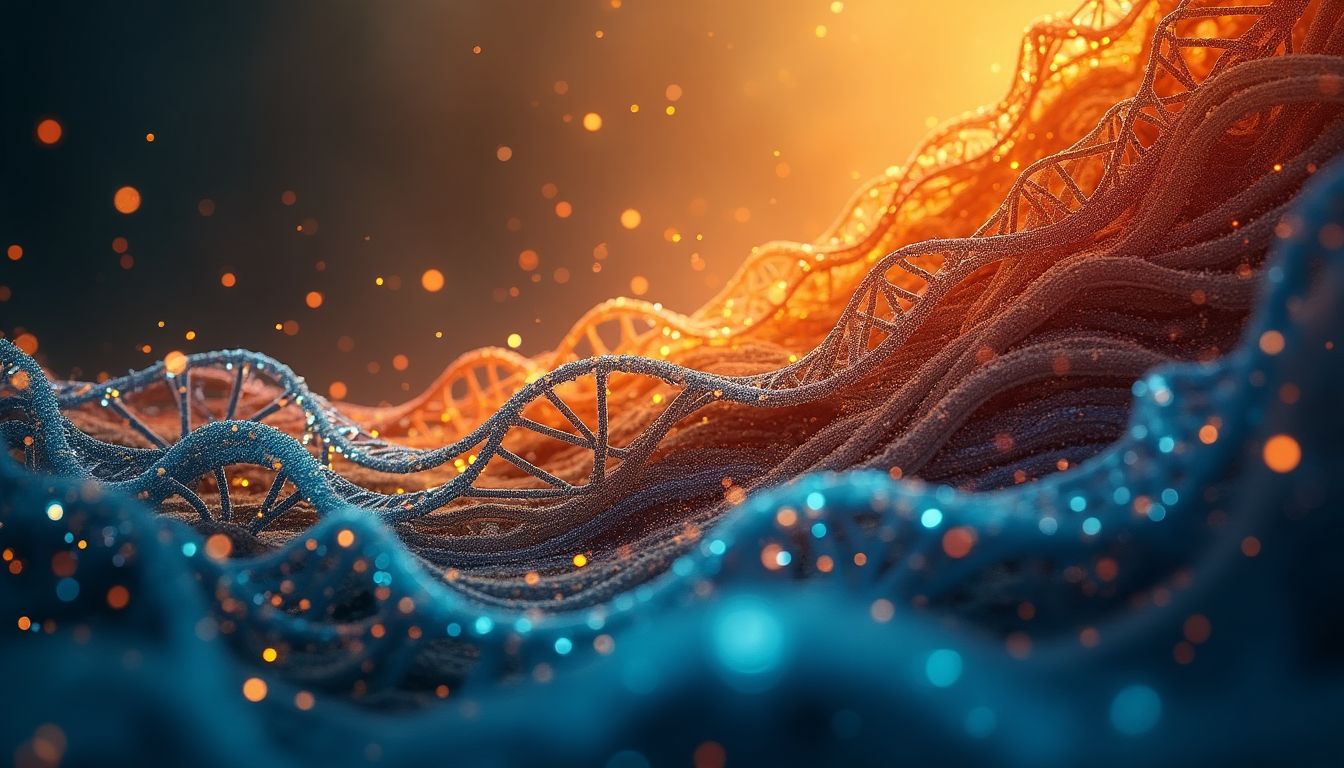
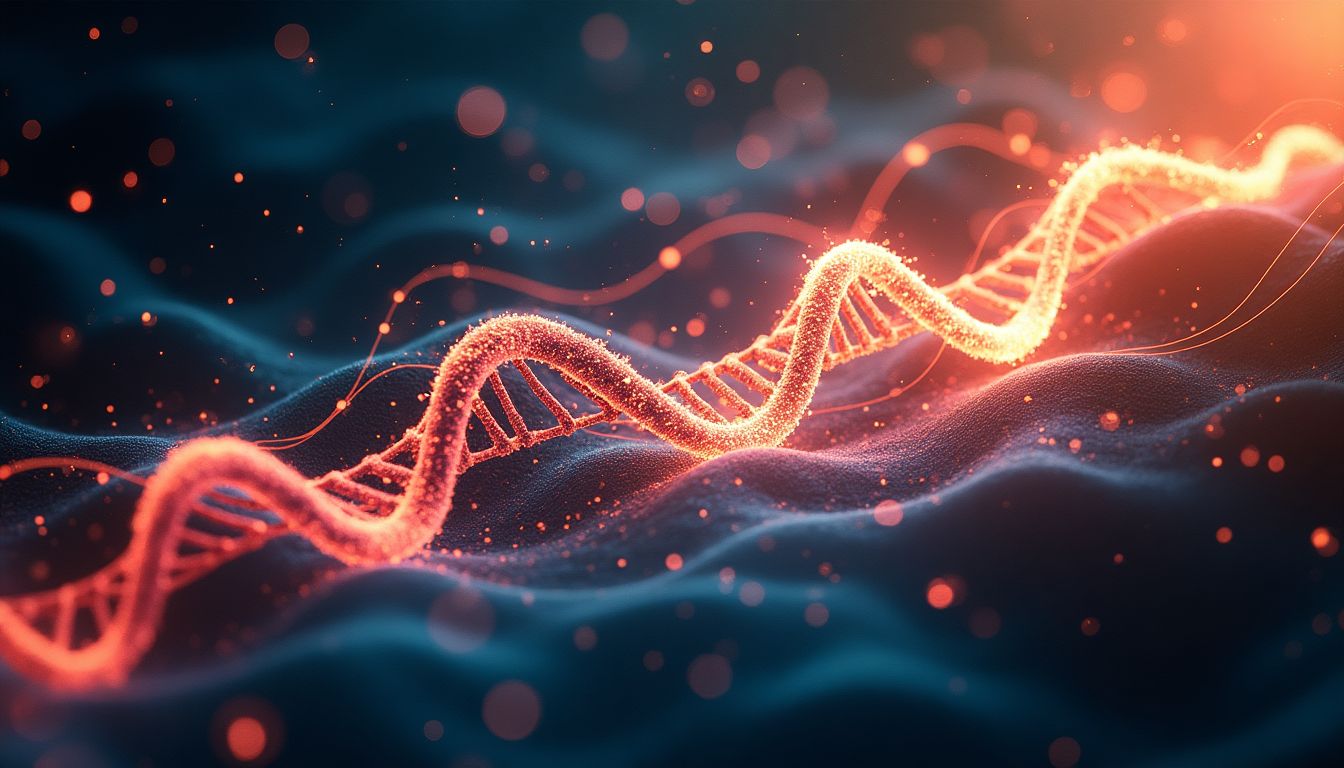
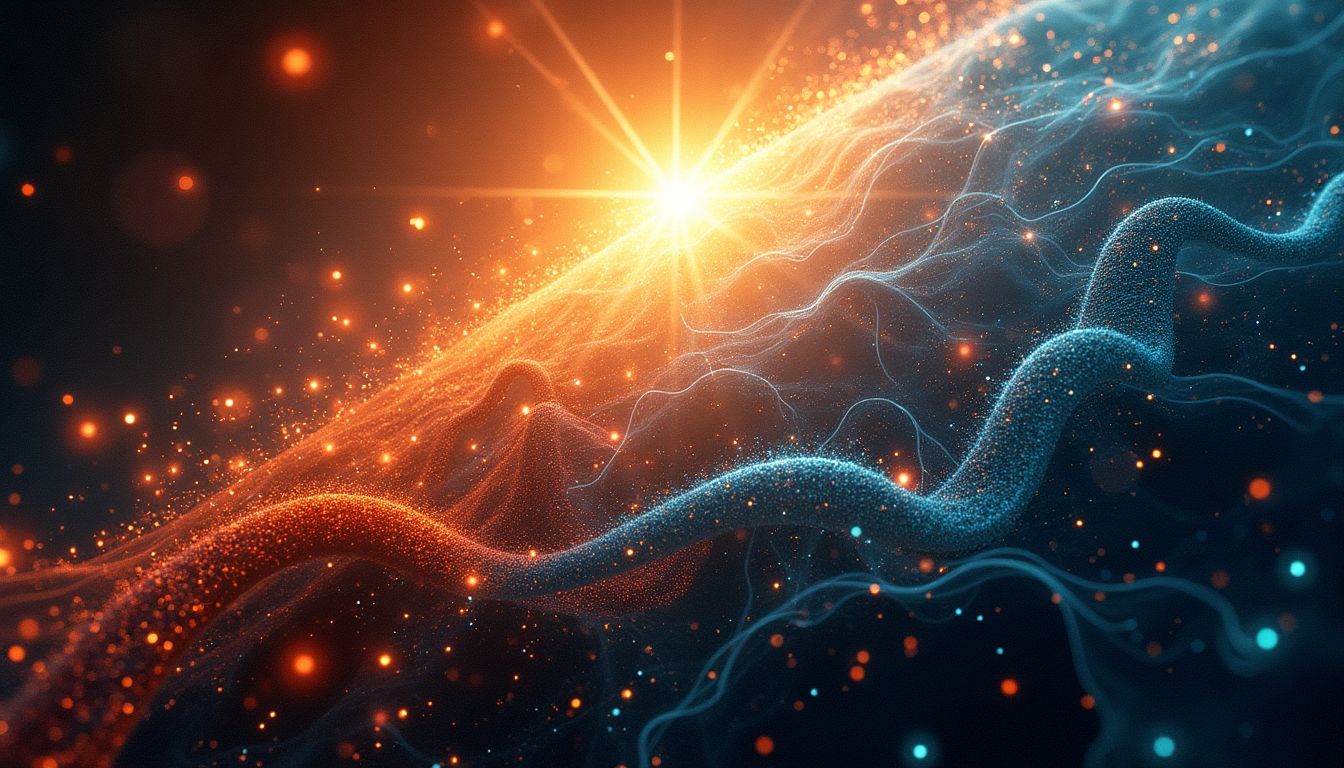
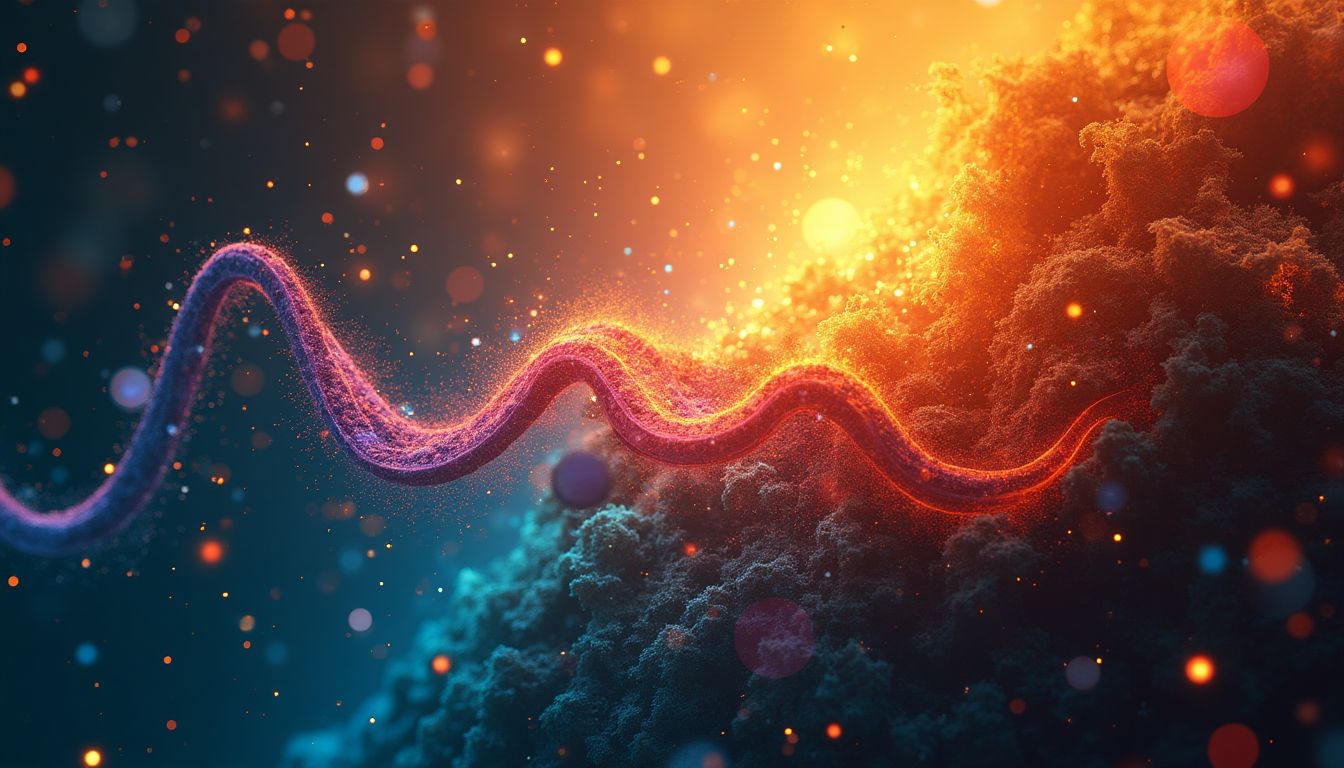
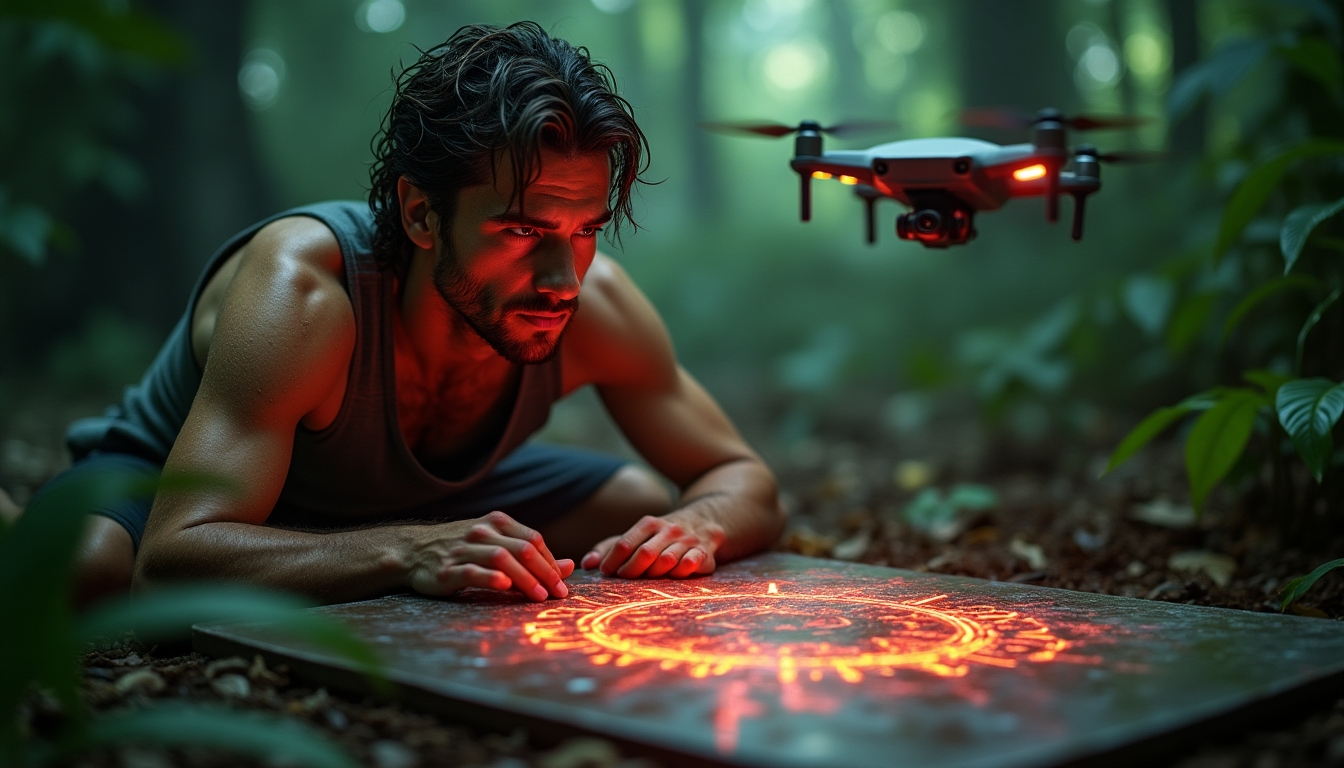
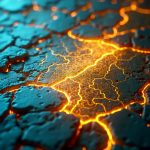
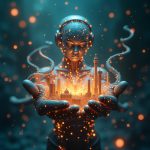





















1 comment